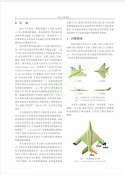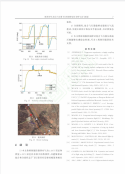So far with Chinese conference leaks and semi-official indications it appears that Chinese 6th gen prototypes explore some combinations variable cycle engines, variable geometry (not sweep wing), and vertical stabilisers being removed. Other aspects seem to be confined to the "software" side of things.
These seem to be similar to how the US hints are approaching 6th gen. NGAD and the naval FA-xx were/are intended to be much larger platforms to further range and payload. Chinese efforts to counter next generation US frontline fighters need to undermine the primary threat of positioning. By somehow being able to shut down and restrain regional US bases while A2ADing US carriers (much harder task than defeating US regional bases), next gen US fighter forces and the rest of their force projection is inhibited.
This means China's 6th gen fighter program appears to be a more symmetrical program. If not, a combined longer ranged supersonic JH-x performing CCA and related counter air/sea/launch platform missions and frontline UCAVs would work much better at performing deterrence. Especially if you add very cheap and quickly made attritable assets that are designed to soak up US A2A missiles. These can only be effective with fast and stealthy launch platforms but we should remember that it costs the US 25x as much money and 5x as much energy to deliver an A2A missile to westpac compared to the cost to China doing the same. It is therefore very much worth pursuing an attritable UAV weapon/platform that demands the US expend a missile to shoot down unless they want it penetrating and eroding their networks.
All these platforms - 6th gen fighter, strategic bomber, CCA, supersonic multirole JH-x, UCAV, UAV and so on are concurrent and rarely overlap in capability and purpose. The issue is time and resources and how to extract the greatest effectiveness knowing how the US is developing its strategy and tactics + platforms in real time. This obviously influences how PLA approaches their own development and procurement programs.
From the last few years it seems China has test flown some interesting hypersonic craft of various dissimilar kinds (read mission profiles) and next generation aircraft. We have grainy photos and foreign intel leaks suggesting a broad range of platforms and how these pieces of the puzzle fit will become more apparent in coming years/decade. Secrecy of course is important which explains the very gradual release of information, sometimes unintended. What I mean is, the strategic thinking is changing and adapting constantly on both sides. With how relatively slow these programs move anyway, the only risk to either is a revolutionary paradigm shift technology that can be quickly applied to MIC. Otherwise, China has every luxury of time in the military space to put up assymetric and symmetric efforts to match and surpass the US in every domain and every new domain.


